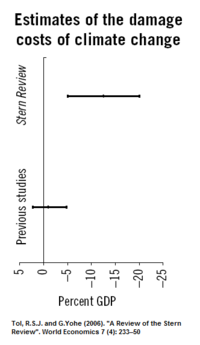
Photo from wikipedia
Abstract Under the Paris Agreement, nations and cities are under increasing pressure to reduce greenhouse gas (GHG) emission. Brownfield land redevelopment promises climate change mitigation benefits; however, no studies have… Click to show full abstract
Abstract Under the Paris Agreement, nations and cities are under increasing pressure to reduce greenhouse gas (GHG) emission. Brownfield land redevelopment promises climate change mitigation benefits; however, no studies have attempted to quantify the mitigation potential on a city level. Here we propose a method for this purpose. The method is based on life cycle assessment of GHG emission as compared to greenfield land development, in three categories: (1) primary impact (associated with physical state of brownfield sites and greenfield sites), (2) secondary impact (associated with remediation activities at brownfield sites), and (3) tertiary impact (associated with post-remediation usage of the brownfield sites and avoided usage of greenfield land). A quantitative assessment was conducted for the city of San Francisco in the US, a growing city with ambitious carbon reduction plans. City wide contaminated land remediation activities were found to render a significant secondary impact, resulting in increased GHG emission of 3.54 Mt CO2 eq. However, by averting the development of greenfield land, this negative impact was partially off-set by a primary impact reduction of 1.22 Mt CO2 eq. Moreover, the redevelopment of brownfield land offers large tertiary impact reductions due to higher housing density, less utility and road construction needs, shorter commute distances, and smaller household energy consumption. Overall, the results show that brownfield land redevelopment led to a net GHG reduction of 51.9 Mt CO2 eq. over a 70-year period, or 0.74 Mt CO2 yr−1, the equivalent of 14% of San Francisco's 5.3 Mt CO2 eq. GHG emission in 2010. It was found that reduced household electricity and space heating energy consumption and shorter commute distances were the main contributors, accounting for 41.2% and 34.0% of the tertiary impact reduction, respectively. While it is not expected that all cities can fully capture these climate change mitigation benefits, the present study demonstrates a quantification method and emphasizes the large climate change mitigation potential associated with brownfield land redevelopment. Progression of this premise will require regulators and policy makers to better align cities' climate change mitigation strategies with urban planning and development actions.
Journal Title: Journal of Cleaner Production
Year Published: 2018
Link to full text (if available)
Share on Social Media: Sign Up to like & get
recommendations!